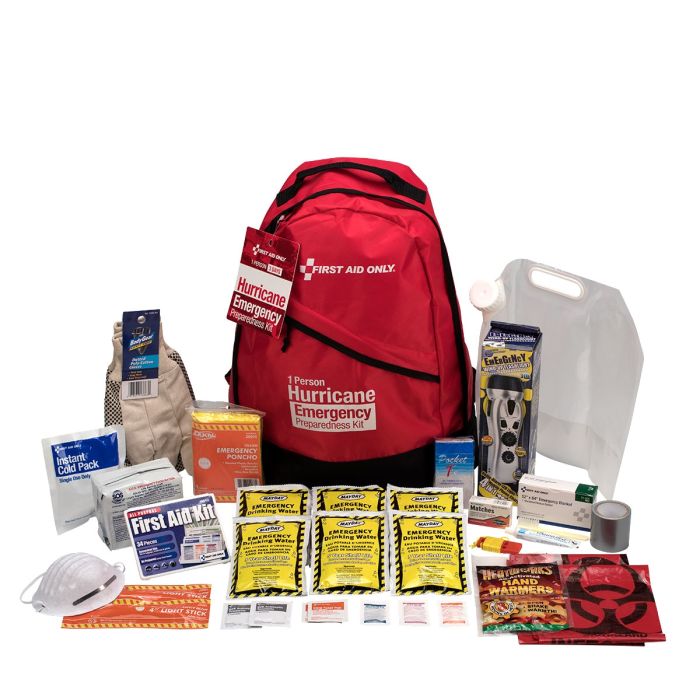Exactly How to Create a Detailed Emergency Readiness Plan
In the realm of readiness, developing a detailed emergency situation strategy is not simply a job to mark off a listing; it is a vital keystone of any organization or person's strength method. From all-natural disasters to unexpected dilemmas, the capacity to anticipate, mitigate, and react efficiently can mean the distinction between mayhem and control. By thoroughly crafting a plan that addresses numerous aspects of emergency situation administration, including threat assessment, communication protocols, resource allocation, and strategic decision-making, one can lay a solid structure for safeguarding properties, procedures, and lives. The true efficacy of such a plan exists not only in its production but also in its ongoing maintenance and adjustment to evolving challenges and hazards.
Value of Emergency Readiness
Emergency situation preparedness is essential for minimizing potential risks and ensuring the security of people and areas. In today's globe, where all-natural catastrophes, public wellness situations, and other emergency situations can strike without warning, being prepared can make a substantial distinction in reducing the influence of these events. By having a well-thought-out emergency readiness strategy in position, organizations and people can respond effectively, secure lives, and reduce residential property damages.
Among the primary reasons why emergency readiness is essential is its role in saving lives. Having a plan that describes clear procedures for emergency, interaction, and emptying reaction can help people act promptly and emphatically when emergencies take place (have a peek here). This can prevent injuries and deaths by making certain that individuals know what steps to require to remain safe
Moreover, emergency situation preparedness improves the resilience of neighborhoods. By cultivating a culture of preparedness and preparation for numerous scenarios, neighborhoods can recover quicker from disasters and interruptions. This strength is vital for preserving stability, connection of operations, and total well-being when faced with misfortune.
Assessing Possible Threats
Considering the significance of being planned for unforeseen events, the initial action in establishing an efficient emergency preparedness strategy includes completely examining and analyzing potential risks. This assessment calls for an extensive review of all possible hazards that could affect the company, taking right into account elements such as place, market, and historical data on events. By determining these risks, organizations can prioritize their readiness initiatives and designate resources efficiently to reduce the most significant hazards.
Usual dangers that organizations might deal with consist of natural disasters like typhoons, quakes, or floodings, technical hazards such as power blackouts or data violations, along with human-caused threats like accidents or intentional acts of physical violence. Carrying out a risk evaluation also entails thinking about the potential influence of these events on the organization's procedures, employees, consumers, and track record. By conducting a detailed danger assessment, companies can develop tailored emergency action plans that resolve their specific vulnerabilities and ensure efficient readiness for any type of potential dilemma.
Developing a Communication Strategy
Establishing a clear and thorough interaction plan is important for efficient emergency situation readiness within companies. In times of situation, communication plays an essential duty in making certain the security and health of staff members, stakeholders, and the community. my company A well-balanced communication plan must describe clear lines of interaction, designate key workers liable for communication tasks, and establish procedures for sharing information rapidly and precisely.
One key element of producing an interaction plan is identifying alternating and primary communication networks (EMERGENCY PREPAREDNESS). These can consist of email, text messaging, phone trees, social networks platforms, and public address systems. It is vital to ensure that these channels are reputable, easily accessible, and regularly examined to guarantee their effectiveness during emergencies

Structure an Emergency Situation Set
Offered the critical significance of preparedness in times of dilemma, a vital element that companies must attend to is the establishment of an emergency package. An emergency situation package acts as a crucial resource that can help mitigate the effect of unanticipated occasions, making sure that crucial supplies and tools are readily available when needed most. When constructing an emergency package, it is necessary to think about the certain requirements and scenarios of the company. Basic items such as water, non-perishable food, emergency treatment supplies, flashlights, batteries, and a battery-powered radio are essential elements of any emergency kit. Additionally, companies should consist of vital papers, such as contact lists, insurance details, and emergency situation action plans, in water resistant containers within the set. Frequently examining and updating the materials of the emergency situation kit is crucial to make certain that products are present and functional. By proactively constructing and keeping an emergency situation package, companies can enhance their preparedness to properly reply to crises and secure their possessions and personnel.
Establishing Emptying Treatments
To guarantee the safety and security and organized evacuation of personnel throughout emergency situations, organizations should develop reliable and clear emptying procedures. Evacuation procedures must include a series of prospective situations, consisting of fires, natural catastrophes, or various other emergency situations that require quick emptying.

Additionally, companies ought to establish a system for audit for all workers during an emptying to make sure that every person has securely exited the facilities. Communication plays an essential function in discharge treatments, with clear instructions on exactly how to evacuate and when to do so. Regular evaluation and updating of emptying procedures based on feedback and changing situations are important to keeping the performance of the strategy.
Verdict
To conclude, developing a detailed emergency situation readiness plan is important for making sure the safety and security and well-being of people in the occasion of a disaster (EMERGENCY PREPAREDNESS). By examining prospective risks, producing a communication plan, building an emergency situation package, and developing discharge companies, people and procedures can be better outfitted to react successfully to emergency situations. It is essential to focus on readiness initiatives to alleviate the impact of disasters and secure lives and home
In the realm of readiness, establishing a comprehensive emergency strategy is not simply a task to inspect off a list; it is an important cornerstone of any kind of organization or person's strength method. When emergencies happen, having a plan that lays out clear treatments for emergency situation, evacuation, and communication feedback can assist individuals act swiftly and emphatically. Homepage. By carrying out a comprehensive danger evaluation, organizations can establish tailored emergency reaction plans that address their specific vulnerabilities and guarantee efficient preparedness for any prospective dilemma
Establishing a extensive and clear interaction strategy is necessary for reliable emergency situation readiness within companies. By analyzing possible dangers, creating a communication plan, building an emergency situation kit, and establishing evacuation organizations, individuals and procedures can be better outfitted to respond properly to emergency situations.